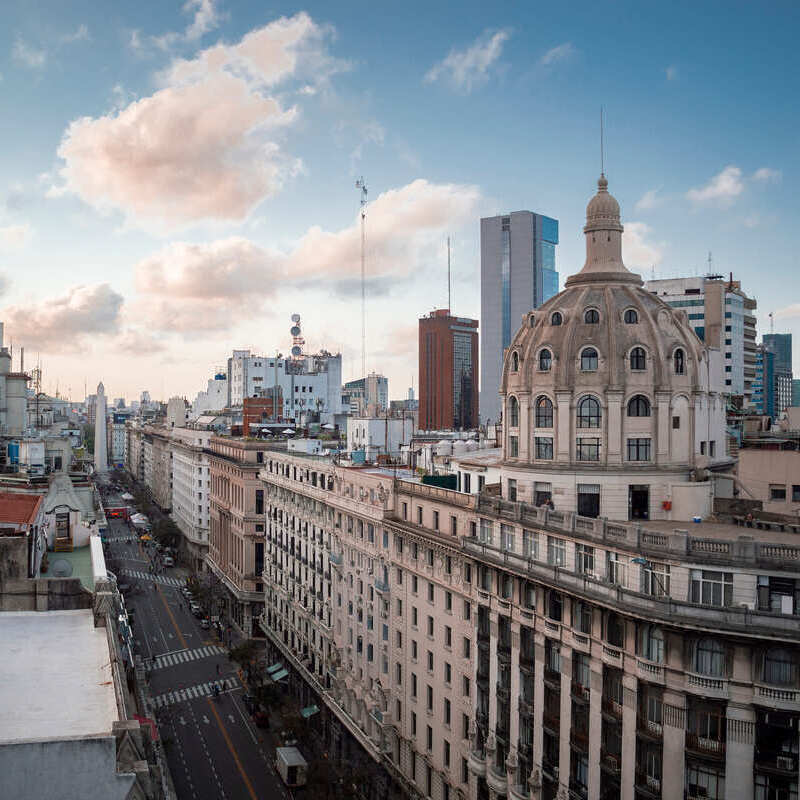South America is one of the most welcoming regions for digital nomads. Whether you’re only visiting for a short period of time or relocating in the long term, you will be met with friendly locals, gorgeous weather, and a far more relaxed atmosphere than back in the U.S. or Canada. There is plenty to choose from, but this one city, in particular, has been ramping up efforts to attract remote workers.

The Paris Of The Global South
Buenos Aires has long been renowned for its elegance and architectural grandeur. Nicknamed the Paris of South America, it is famous for its wide boulevards, lined with lush green trees and monumental Belle époque buildings dating back to the late 19th century. Out of all Latin American capitals, it is arguably the one that feels most European.
Other than its bewildering beauty and Old World charm, Buenos Aires is a modern mecca for haute cuisine, as the home of several high-end restaurants and Michelin star-worthy street food stalls. From the deliciously tender asados to the fulfilling choripan butties, those devoted foodies will have a lot of ground to cover on a culinary tour of the city.

And, of course, Buenos Aires is the birthplace of tango, one of the world football capitals, and a lively city break packed with color, trendy bars, and urban art, but there is more: it is currently racing to become South America’s digital nomad haven, increasing its already impossibly vast cultural offer, and ensuring the local market is open to foreign investment.
As reported by local news outlets, it is being presented at a tourism fair in Madrid, Spain as the best city to ‘live, visit, work and do business.’ Indeed, Americans relocating to Buenos Aires will enjoy a much higher quality of life compared to the United States. Due to the excellent currency exchange rate, and the strength of the dollar against the Argentinian peso, everything is much cheaper:

Is Buenos Aires A Digital Nomad Hub In The Making?
According to Nomadlist, American expats working remotely from Buenos Aires can expect to spend USD$1,914 on average per month, though the final sum can be much lower. For instance, staying outside the city center may help you save some money on rent, and there are many points of interest around the metropolis that can be visited for free, such as:
- The art-filled La Recoleta Cemetery
- The San Telmo fleamarket
- The Casa Rosada Museum
- The Immigration Museum

In general, food, accommodation, transportation, and tourist attractions are all hugely affordable: Americans will spend less living and working in Buenos Aires without ever feeling financially strained. Local authorities are aware of the city’s irresistible appeal, particularly to a budget-conscious, younger demographic, and they have been preparing for further growth:
This year, they expect to host 22,000 remote workers, and the fact that Argentina was one of the first in the continent to drop all pandemic-related entry requirements is not a mere coincidence. It is staying ahead of the curve and sparing no effort in its attempt to regain the trust of vacationers and nomads alike following an era of lockdowns and travel bans.

Digital Nomad Visa Applications Are Open
On top of that, it has partnered with AirBnB, the largest long-term vacation rental platform, to promote longer stays, along with a select list of destinations which also include the state of Baja California Sur, in Mexico, and the Canary Islands in Spain, not to mention it has rolled out a Digital Nomad Visa, allowing nomads to reside in Argentina for longer than 90 days without being fined.
In order to apply online, Americans must:

- Submit a clear image of a valid and current passport (the personal data and photo page)
- A frontal face photo taken against a white background
- Any documentation that proves they work remotely
- A brief Curriculum Vitae stating their experience in their area of expertise
Source: travel off path
















